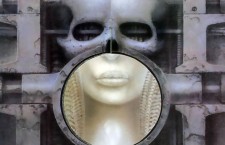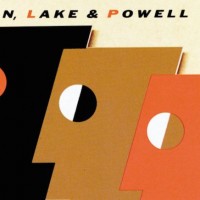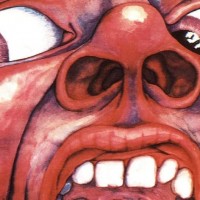Trilogy, the third studio effort from Emerson Lake and Palmer, arrived on July 6, 1972 as a brilliant mix of multi-sectioned long-form compositions with punchier more digestible rock songs.
In many ways, Keith Emerson, Greg Lake and Carl Palmer were in the right place at the right time. They arguably gathered as a threesome while peaking creatively. The marketplace was hungry for the kind of spectacular flights of musical fancy that Emerson Lake and Palmer would eventually come to personify.
Even the technology of the day was rising to meet them — though, as is typical with such things, that could be a double-edged sword.
“If I had to pick out our best album, I think that would be the best one for me,” Greg Lake says of Trilogy, in an exclusive Something Else! Sitdown. “There’s a few reasons for that, you know. First of all, I think it’s the point where it all comes together: The innovative conceptual thoughts, the musical dexterity, the bonding of the band as a sort of brotherhood — it all came together there. The other thing that locked in, as well, was that recording studios right at that time went from 8 track to 24 track, and also synthesizers changed from being monophonic to polyphonic. All of that happened at one time, and at the same time as ELP grew up.”
The Lake-produced Trilogy, which remains Emerson Lake and Palmer’s best-ever charting U.S. release, also included Emerson’s inventive reworking of “Hoedown” — an Aaron Copland composition which began a concert highlight for Emerson Lake and Palmer, and later for Emerson too. The inventive “Abaddon’s Bolero,” on the other hand, was only attempted in a concert setting a handful of times.
That brings Greg Lake to his lone criticism of Trilogy.
“The one thing it suffered from,” Lake admits, “was an overdose of overdubs. When we came to perform it live, it was very difficult to replicate what we’d done on the recording. For that reason, a lot of Trilogy never got performed. Things like ‘Abaddon’s Bolero,’ I don’t know how many overdubs it had on it. Because, of course, once we had 24 tracks, we would record 10 tracks and then mix them down to 2! It was the new toy.”
As Trilogy unfolds, however, these layered, long-form moments like “The Endless Enigma” give way to more folk-focused offerings like “From the Beginning,” which entered the Billboard Top 40. The snarky three-minute “Living Sin” is balanced by the at-times contagiously pretty nine-minute title track. As such, the album has proven itself as an easier listen for successive generations still working their way up to the typically much darker, consistently lengthier excursions found on Emerson Lake and Palmer’s eponymous debut and Tarkus recordings from 1970-71.
“There’s something else about Trilogy,” Greg Lake adds. “It’s got some strange property that’s totally unique. I don’t know of another album that sounds like that, at all. I like the beauty of that album; there’s a lot of beauty on Trilogy.”
- Nick DeRiso’s Best of 2015 (Rock + Pop): Death Cab for Cutie, Joe Jackson, Toto + Others - January 18, 2016
- Nick DeRiso’s Best of 2015 (Blues, Jazz + R&B): Boz Scaggs, Gavin Harrison, Alabama Shakes - January 10, 2016
- Nick DeRiso’s Best of 2015 (Reissues + Live): John Oates, Led Zeppelin, Yes, Faces + others - January 7, 2016




